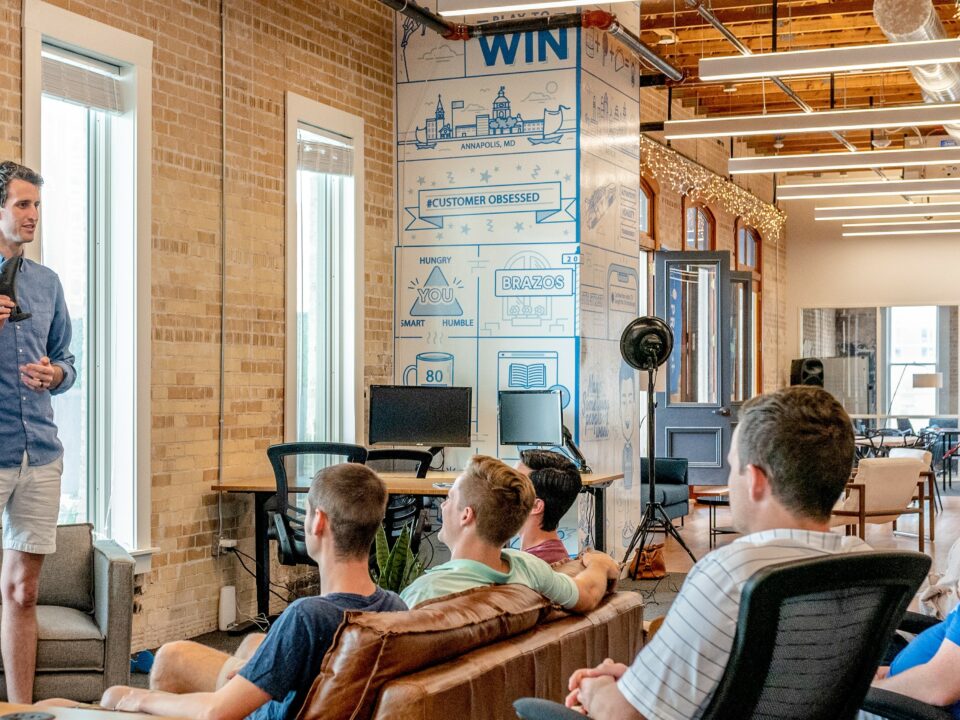Let’s talk about pleasure. And let’s bring it to the workplace, forging a connection between good feelings and your company.
But first, let’s make your intellect happy… then we’ll get to your emotions.
It has taken me 30 years to figure out the formula to guarantee growth and ensure companies keep increasing revenue and profit. Consistent growth is surprisingly formulaic–once we understand the brain and how it handles change. Then we add a simple three-step formula to optimize pleasure, and execution abounds.
Step #1: Motivation = Inspire Insights
Most of us focus on extrinsic motivation, motivation outside of a person, the good old carrot/stick. But this won’t get you the growth you want. You need intrinsic motivation—motivation that the individual generates inside of herself —and the best way to do this is to cause insights. Insights give the brain the experience of reward, and forges powerful and positive pathways connecting pleasure and good feelings to your company–connecting pleasure and good feelings with performance.
One of my favorite coaching tools is called the Outcome Frame. It helps us find out what we really want and how we’ll know when we got it. It generates clarity and insights. The long form involves thirteen questions, here are the first 3 to get you started:
1.What would you like? (Positive outcome you can create and maintain, reasonable size)
2. What will having that do for you? (Benefits and how you’ll feel)
3. How will you know when you have it? (Proof/criteria so you’ll know you got it)
Click here and I’ll walk you through a full Outcome Frame in a 6 minute video.
Helping our people focus on the outcome they want to create, not the problems in the way, activates their reward (pleasure) network. More on this in a sec.
Step #2: Momentum = Foster Focus
To get and keep momentum we need to foster focus and keep the brain looking at what will move the needle, and generate the greatest results now. There will always be a constant stream of bright shiny objects to distract us.
Let’s look at where your focus is.
Think of an average month—where does your time go? To low value activities (LVAs) that you could ditch, delegate, defer? Or to high value activities (HVAs) that energize you, enable you to achieve the outcomes you want?
When clients first start coaching with me I often see a time allocation like this:
| Low Value Activities | High Value Activities |
| Micromanaging | Strategic Planning |
| Doing Other People’s Work | Product Development |
| Mediating Conflict Within Team | Cultivating Leadership in Team |
| Filing | Forging External Alliances |
| Expense Reports | Serving Clients |
| Driving Revenue & Profit | |
| Total Percentage Low: 45% | Total Percentage High: 55% |
List your LVAs and HVAs over an average month. The total of both columns together equals 100%. What are you focusing on? If you’re not at 70%+ on HVAs, get your executive coach to immediately help you change this.
Pleasure and Pain In Your Brain
Let’s look at what happens when we are having insights—or not–and when we are focused–or not. Your brain has two key networks: Pain and Pleasure. Naomi Eisenberger and Matt Lieberman of UCLA have done some terrific research here.
The Pain (social rejection) network is lit up at work when we feel we’re being treated unfairly, experiencing negative social comparison and/or social exclusion. The Pleasure (social reward) network is lit up at work when we experience having a good reputation, being treated fairly, cooperating with others. This makes us feel good, which is key to your company’s performance and your team’s overall happiness (yours too!).
We want your team members to forge connections between reward, or feeling good, with your company. The first two M’s (motivation and momentum) gave you tools to do this. Here’s one more.
Step 3: Make Them Matter = Create Celebration
To forge deep feelings of mattering we’ll light up the reward network so we actually start to experience reward by simply anticipating it.
When we give our employees something to aspire to we help them activate their reward network and increase focus and have insights. Every year a number of HR consulting firms survey what truly motivates people: money, travel, appreciation, etc. And every year appreciation wins—usually at 73% of the respondents too. People want to be appreciated, and it needs to be in public.
It’s super easy to create these programs—here are the keys:
High Fives/Shout Outs/Weekly Wins: This is a way for employees to appreciate each other. Train your team to appreciate others that:
- help out when not expected/required
- are excellent models of the company’s values
- work extra hard to pull off a miracle.
A Shout Out/High Five can be given on your intranet (a Sharepoint site, etc) or even aGoogle spreadsheet or via good old email. The key is to celebrate them weekly. I also like to acknowledge the person being celebrated + the person that gave the shout out. Rewarding both parties lights up 2 reward networks instead of one and makes others want to be generous and appreciate their co-workers so they get celebrated too.
Rock Star is like Employee of the Month except it is nominated by co-workers. This helps us avoid the cynicism and perceived unfairness when management makes the selection.
So to guarantee growth, keep your team focused on reward:
- Inspire Insights -> Outcome Frame Tool
- Foster Focus -> Low/High Value Activities Tool
- Create Celebrations -> Rock Star, High Fives
Is your culture ready to guarantee growth? Take our 3 minute growth assessment to find out.







